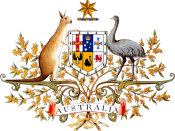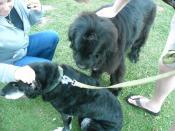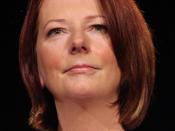To begin to understand the concept of the idea of a 'typical' Australian as a bloke, we need to return to the beginning of the 20th century and look at the 'national image' produced by historians, writers, painters, publishers, and journalists such as John Archibald, Banjo Paterson, Edward Dyson, Henry Lawson, Tom Roberts, Arthur Streeton and Charles Conder, to name a few. These men were relatively young at the turn of the century and were part of the formation of a "new intellectual community, a professional 'Bohemia' in which they could see themselves as men committed to their art. In this way, through both their professionalism and their bohemianism, they distinguished themselves from those educated middle-class laymen who were committed to cultural improvement and had dominated the cultural establishment since the gold rushes" (Whitlock, G. & Carter, D; (Eds.) 1992, p30).
The establishment of the 'Cannibal Club' in Melbourne and the 'Dawn and Dusk Club' in Sydney tended to be exclusive, elitist and solely for the 'intellectual gentleman'.
This male exclusiveness carried through to the bush where women were seen as equally out of place in the city clubs and in the country shearing sheds. This sexism arose because 'feminine' values were linked with the ruling English type of 'respectability' that these young bohemians loathed (Whitlock, G; Carter, D; p35). From this 'national image' emerged the term 'typical Australian'.
In 1955 the Australian News and Information Bureau distributed a pamphlet stating that many Australians have a distinctive accent and are indicative of the image perceived by people overseas; this being a tall, lean, sun tanned stockman, a rugged opal gouge or a crocodile hunter. Again all these images are inclined to be seen as being male (Whitlock, G; Carter, D; p46).
Attempts to define the 'typical Australian' have been documented...



Bibliography
Is there a bibliography to all the references?
0 out of 0 people found this comment useful.